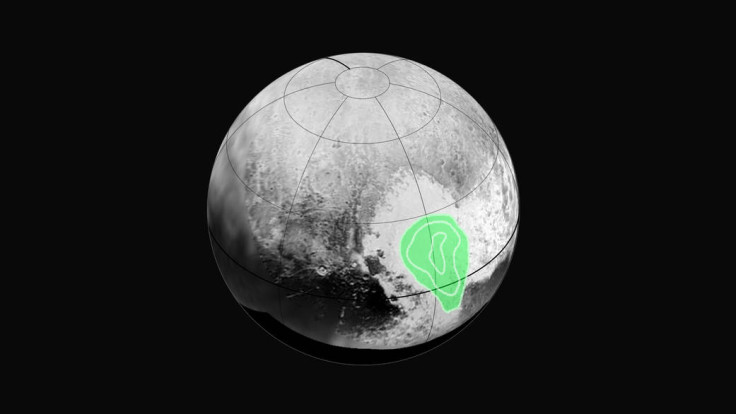New Horizons' Pluto flyby discovers 'unknown source of energy' carving up the planet's surface

Heat generated by a mysterious energy source appears to cause melting in the thick layer of ice that encases the planet Pluto. It's thought that powerful energy forces are created in a similar way to those seen by Earth's tectonic plates.
This could include volcanoes and geysers, according to Alan Stern, principal investigator of Nasa's New Horizons mission.
Stern believes that theories about Pluto's cold and inert surface due to its distance from the sun were incorrect.
"We were completely wrong about that. They are very active Pluto and Charon have been geologically active for billions of years, but we don't know what the energy is that is driving it. It's a puzzle," he told The Sunday Times.
Pluto wags its tail... its plasma tail. We found atmospheric ions behind Pluto. http://t.co/brq5jMTdJO #PlutoFlyby pic.twitter.com/mzFcrZXnIz
— NASA (@NASA) July 17, 2015"They have surface areas that have no craters. There must be craters [from meteorite impacts] unless they are young. We also see fault lines, scarps [cliffs] and other tectonic features such as rift valleys on both Pluto and Charon. It is unmistakable."
The space probe has discovered the presence of icy blobs, which could point to a sign of convection heating driven by Pluto's subsurface heat.
Stern was unwilling to be drawn on the source of the energy. "There is an unknown source of energy… driving processes on the surface.
PI Alan Stern talks @NASANewHorizons #PlutoFlyby at #Plutopalooza @JHUAPL; MOM Alice Bowman on deck pic.twitter.com/u4DzCKX7dL
— NASA New Horizons (@NASANewHorizons) July 18, 2015"Where does the energy come from? We don't know. We have theories. We flew by Pluto on Tuesday [14 July]. We made the discovery on Thursday and now it's Saturday. We just don't know and we cannot formulate theories that fast."
New Horizons has sent back just 2% of data, the rest will take around 18 months to download.
"What we have now is scratching the surface," Stern added. "The best is yet to come."
Pluto is covered in a deep layer of water ice which, frozen by the planet's -230C surface temperature, behaves like rock.
© Copyright IBTimes 2025. All rights reserved.






















